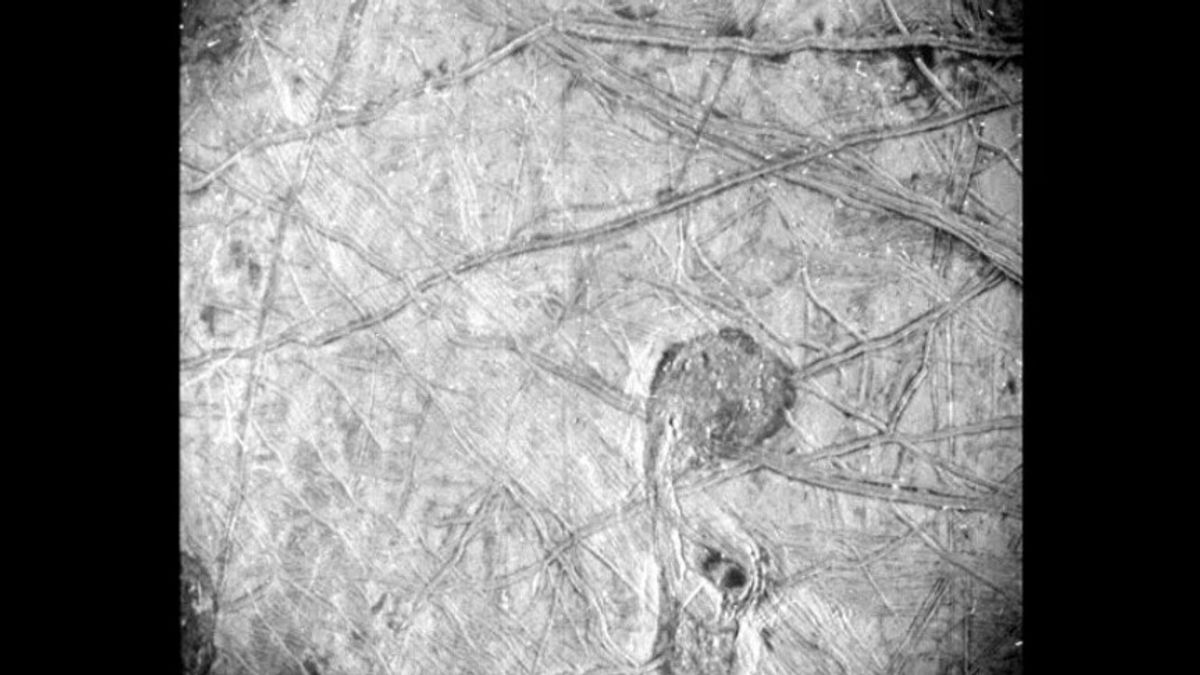JAKARTA - Europa has again shown itself to NASA's Juno spacecraft. Different from the previous image, Jupiter's moon looks closer to unusual details.
The image reveals a frozen ice surface with dark spots surrounding the upper right corner of the image and in the lower right of the center, according to scientists, this possibility was generated by material emerging from the depth of the Europa Sea and pouring it to the surface of the ice.
Meanwhile, small white dots scattered across the image, scientists say, are signs of penetration of high-energy particles from severe radiation environments around the moon.
Juno took pictures with the Stellar Reference Unit (SRU) camera, which typically helps Juno maintain its orientation to determine the position of the spacecraft in the surrounding cosmos, but over the flight, the SRU was doubled as a science instrument, capturing stunning black-and-white images.
Juno's new image shows Europa's surface at a resolution of 840 to 1,115 feet per pixel. Interestingly, the SRU takes pictures at night, when the only light that shines the moon is reflected from Jupiter's cloud top.
"This image opens an incredible level of detail in areas that were previously not imaged at such resolutions and under such open lighting conditions," said SRU chief investigator Haidi Becker as quoted by Space, Saturday, October 8.
"The use of a star-tracking camera by the team for science is a great example of Juno's breakthrough capabilities. These features are very interesting. Understand how they formed, and how they connect to Europa's history tells us about the internal and external processes that make up the ice crust."
Juno took pictures on September 29 while traveling closest to Europa, orbiting about 256 miles above the moon's ice shell.
The images give scientists the opportunity to provide their most detailed views on Europa's surface since it flew acrossminton in 2000. They say Europa is one of the most likely places in the Solar System to accommodate life beyond Earth.
Juno's main science goal was to focus solely on Jupiter's gas giants, but when the mission was extended last year, scientists could schedule some observation time for three of the planet's four main moons, namely Ganymede, Europa and Io.
"With this Europa flyby, Juno has now seen Jupiter's two most interesting moons of close range, and its ice shell crust looks very different from each other," said Southwest Research Institute physicist at the San Antonio and Juno lead investigator Scott Bolton.
"In 2023, Io, the most volcanic moon in the Solar System, will join the club," he continued.
For your information, scientists are still analyzing Juno data collected during Europa's recent flight, they will learn more about the interesting world, which many believe may host microbial life at its undersea depths.
The English, Chinese, Japanese, Arabic, and French versions are automatically generated by the AI. So there may still be inaccuracies in translating, please always see Indonesian as our main language. (system supported by DigitalSiber.id)













